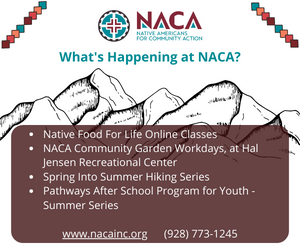 With Snowbowl now in full swing, skiing and snowboarding are on the minds of many of us in Northern Arizona. If you are in this category, you know how you feel at the end of the season – your musculoskeletal health is in excellent shape. However, that usually isn’t the case at the very start of a ski season. It’s always best to dedicate some time to ensuring your muscles, joints, ligaments and cardiovascular system are prepared for an injury-free season ahead.
With Snowbowl now in full swing, skiing and snowboarding are on the minds of many of us in Northern Arizona. If you are in this category, you know how you feel at the end of the season – your musculoskeletal health is in excellent shape. However, that usually isn’t the case at the very start of a ski season. It’s always best to dedicate some time to ensuring your muscles, joints, ligaments and cardiovascular system are prepared for an injury-free season ahead.
Skiing and snowboarding demand immense balance, coordination and stamina. If you are hoping to get off the “green circle” easy runs, you must take on more risk and chance of injury. Dry-land training, as it’s called, helps optimize your body for the stresses it will take on with all-mountain skiing. No one wants to end their day on the mountain for a toboggan ride down to the Ski Patrol clinic (or a ride down the mountain in an ambulance) all because there was neglect to get in shape before carving some turns.
Some of the more common winter sports injuries we see in Urgent Ortho and Northern Arizona Orthopaedics are torn knee ligaments, torn Achilles tendons, ankle and wrist fractures, MCL sprains, bruised tailbones and back spasms. Most of these can be mitigated by proper preparation. You wouldn’t want an injury to plant you on the couch, while others enjoy their ski season.
A bit of motivation and a lot of dedication can help you prepare for the slopes and minimize the chance of getting injured. Here are a few tips to help once you check with your primary care provider to ensure you can tolerate the rigorous program outline below:
STRENGTH: Train the large muscles in your legs for strength and endurance. Hiking steep trails, flights of stairs or walking on a treadmill set on a high incline will help with your strength.
CORE STRENGTH: Working on low back and abdominal muscles with movements that require stability and strength mid-torso will enhance stability and balance. Planks, squats, kettle ball lifts, seated twists, etc. all increase core strength.
BALANCE: Use of a balance or wobble board, slack line, balance beam or lines on the floor will help improve you balance. Trying drills barefoot or with ski boots on only intensifies the skill.
AEROBIC: Running, mountain biking, cycling or hiking can help you build up endurance for long days on the slopes and trails. When you’re trying to get in one last run when you’re exhausted, you are more prone to injury.
ANAEROBIC: Daily anaerobic exercise (1-3 minutes as hard as you can go without rest, in sets of 3, with 5-minute rest intervals) of high-intensity agility plyometric drills will build up burst endurance. Sprints, jumping, skipping and lateral bounding all are great.
Finally, you should never consider heading out to any ski resort without outfitting yourself in protective gear. Wearing a helmet designed for skiing or snowboarding is a must. Helmets can protect from concussions or other head injuries during impact with the ground or a tree strike. For snowboarders, wrist protection provides an added layer of protection against wrist fractures or sprains, injuries we see often in the clinic.
As a skier myself, I know just how important it is to feel strong, primed and fully ready for an epic ski season. This goes for my whole family, who enjoy skiing together. Be smart, take it seriously and have fun getting your body in great shape this winter! FBN
By Joel Rohrbough, M.D.
Joel Rohrbough, M.D., is an orthopaedic surgeon specializing in Sports Medicine at Northern Arizona Orthopaedics and Urgent Ortho. He helps people from all athletic abilities recovery from injury and return to active lives. To learn more or to request an appointment with Dr. Rohrbough, visit northAZortho.com or call 928-226-2900.







